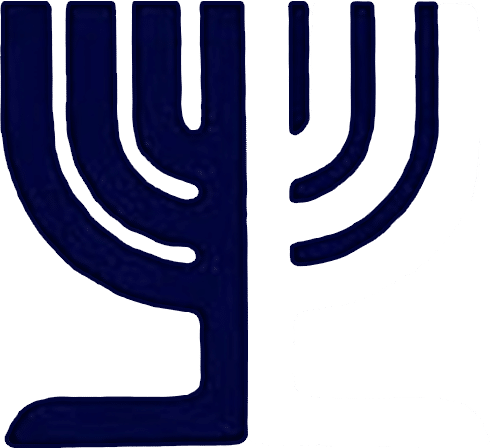The Jewish History of Paducah
Adapted from: Encyclopedia of Southern Jewish Communities – Paducah, Kentucky
Overview
Paducah, originally known as Pekin, was settled around 1815. Settlers were attracted to the area because of its location at the confluence of the Ohio and Tennessee Rivers and not far from the Mississippi River. The community was initially inhabited by a mix of Native Americans and Europeans who lived harmoniously, trading goods and services.
Paducah seemed ideally situated to serve as a trading gateway between the North and South. However, the town was overshadowed by neighboring Smithland which was elevated on bluffs and had a deep natural harbor. Paducah was flat and had drainage problems. It was a smaller town and most of the area’s wealthy planters and businessmen lived in Smithland. The advent of the railroad in the 1850s would change this. After the Civil War, Paducah became the midway stop between Louisville and Memphis on the railroad and emerged as a major riverport. By the late 19th century, Paducah was a wholesale and commercial center for the region.
Early Settlers

Jews had lived in the area since the 1840s. The earliest Jews in Paducah included Morris and Abraham Uri, D. Lowenstein, and Leopold Klaw, each of whom opened small merchandise stores on Front Street. After the railroad was built in Paducah in the 1850s, a growing number of Jewish immigrants settled in the town. A handful of Jews who had been living in Smithland, including Benjamin Weille, Samuel Dreyfus, and Mangold Livingston, came to Paducah by the end of the Civil War. By 1859, there were eleven Jewish-owned businesses in Paducah, several of which were partnerships of two or more Jews. Many ran clothing stores. Of the eight clothing businesses in Paducah at that time, six were Jewish owned. One of these included a store owned by Solomon Greenbaum and Cesar Kaskel. Kaskel, a native of Prussia, had moved to Paducah in 1858. In 1859, twenty Paducah Jews founded the Chevra Yeshurum Burial Society and bought land for a cemetery.
The Civil War
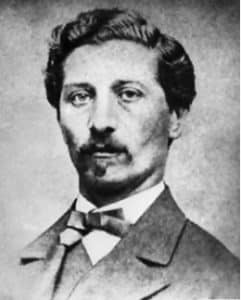
On December 17, 1862, Northern General Ulysses S. Grant issued his infamous Order No. 11, expelling all Jews from the entire territory under his command, including Paducah. On December 28, the local provost marshal in Paducah specifically called for Cesar Kaskel and informed him that he would have to leave the city within 24 hours. Kaskel, who supported the North and was vice president of the Paducah Union League Club, was shocked by the order. Together with the brothers Daniel, Marcus, and Alexander Wolff, Kaskel quickly sent a telegram of protest to President Lincoln calling on him to overturn this “inhuman order” that violated Jews’ rights under The Constitution.
When Kaskel did not receive an immediate response, he left at once for Washington, D.C. to lobby the government directly. In the meantime, most of the thirty or so Jewish families living in Paducah at the time left the city, traveling up the Ohio River to Cincinnati. Kaskel arrived in the nation’s capital on January 3, 1863, and with the help of an Ohio congressman, got in to meet with President Lincoln, who had not heard of General Grant’s Order No. 11. After hearing Kaskel’s explanation of the situation, President Lincoln quickly agreed to overturn the order. On January 6th General Grant’s office sent out notice that the order was revoked. Most of the expelled Paducah Jews returned to the city. Grant’s Order was only enforced for a little over a week.
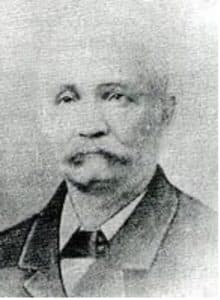
In addition to this brief expulsion, wartime hardships, and regulations also interrupted the trade of Jewish merchants in Paducah. When the Confederate army attacked Paducah in 1863, many businesses closed, with their owners transporting their merchandise to safer cities. These wartime privations caused many Paducah Jews to leave. Kaskel moved to New York City while the Wolff brothers went back to Germany after the war. Of the twenty Jewish men living in Paducah in 1859, only eight still lived in the city in 1870. Despite this, Paducah Jews still felt welcome. They blamed the Union army, not their fellow citizens, for the expulsion. There is even a local legend that Paducah residents hid Jews during the expulsion. Whether or not this is true, the fact remains that Jews were well accepted in Paducah, both before and after the war. They were important civic and business leaders who helped guide the city’s development in the decades after the war. Most notably, Meyer Weil who came to Paducah in 1863 and later opened a wholesale tobacco company, was elected to four terms as mayor in the 1870s. During his tenure, he built a city hospital and led Paducah through the Panic of 1873, helping to restore the city’s credit rating. Later, Weil served as the city tax collector and spent two terms representing Paducah in the state legislature. Weil’s career shows that Jews found opportunity and acceptance in Paducah soon after the expulsion.
Organized Jewish Life in Paducah
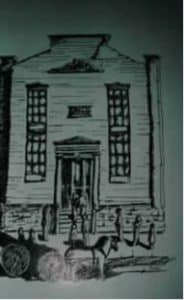
The Civil War also disrupted the spiritual lives of Paducah Jews. Although they had founded a burial society in 1859, the group remained inactive during the early years of the war. It wasn’t officially chartered until 1864. Not until 1868 did they begin to hold services, congregating for the high holidays on the third floor of Mangold Livingston’s dry goods store. They brought in a traveling reader to lead the services and auctioned off seats to pay his expenses. Paducah Jews met in the same place for the high holidays in 1869 and 1870, though there is no evidence that they met for Shabbat services during the rest of the year. A B’nai B’rith lodge was established in 1870 with 27 charter members; seventeen of these founding members were under the age of 40, reflecting the relative youth of the Paducah Jewish community. The founding of the lodge helped inspire Paducah Jews to establish a formal congregation. Soon after, two committees, one of men and the other of women, worked together to raise money to buy land and build a synagogue. In 1871, the Chevra Yeshurum Burial Society amended its state charter to include the new purpose of forming a congregation for religious worship. They named this congregation Kehillah Kodesh Bene Yeshurum (Holy Community of the People of Righteousness).
With Meyer Lieber as its first president, Bene Yeshurum soon bought land on Chestnut Street and constructed a modest two-story frame building. In September 1871, the congregation dedicated this new synagogue in a ceremony featuring a Torah procession that started at Lieber’s house. Mayor J. W. Sauner, the city council, and many other local citizens took part in the procession. The dedication attracted several locals who were curious to see a Jewish house of worship and knew little about Judaism. Bene Yeshurum hired Leon Leopold as its first spiritual leader in 1871. In addition to leading services, Leopold also taught the congregation’s Sunday school.
When the congregation was formed, there were many heated discussions about religious practices and rituals. Most members wanted Reform services, but a traditional faction pushed for separate seating for men and women and the requirement that men wear head coverings. The group finally agreed to have mixed-gender seating, while Morris Uri worked out a compromise in which members could wear yarmulkes during services if they liked. In the end, only one member wore a yarmulke at the congregation’s services. When the synagogue was dedicated in 1871, it included an organ and the congregation had a mixed-gender choir, reflecting the Reform nature of its services. In 1872, Bene Yeshurum held its first confirmation ceremony with six children getting confirmed that year. According to member Isaac Bernheim, after the successful confirmation ceremony, “the battle for Reform Judaism had been won and the question of Orthodox ceremonials, which heretofore had created discussion and trouble, was forever put to rest.” The congregation joined the Union of American Hebrew Congregations by 1880.
A Growing Community
After the Civil War, the Jewish community grew quickly as Paducah flourished economically. By 1866, 34 Jewish men were listed in the city directory. Their ranks included skilled craftsmen like shoemakers, tailors, and bakers in addition to merchants. Because of Paducah’s location at the junction of the Ohio River and major railroads, several Jews opened wholesale operations, selling dry goods, groceries, tobacco, and whiskey to stores around the region. As southerners clamored for goods after the war, Paducah merchants thrived. A growing number of Jewish immigrants from Europe came to Paducah in the years after the Civil War. By 1878, an estimated 200 Jews lived in Paducah. Several of them established businesses that remained in operation for over a century.
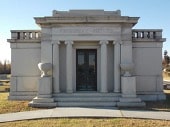
Paducah Jews dominated the local whiskey business. Five of the six wholesale liquor firms in Paducah in 1894 were Jewish-owned. Many of these companies eventually moved into distilling. Some of their owners were among the most prominent and respected businessmen in town. Joseph Friedman started a distillery and wholesale whiskey business with his brother-in-law John Keiler in 1890. Their distillery became one of the largest in the country, producing 20,000 barrels of whiskey a year. Friedman also built and operated the Palmer Hotel and the Kentucky Theater. As president of the Commercial Club, Friedman worked to recruit industry to Paducah. He became a leading local philanthropist, creating a settlement house to help the city’s poor. When Friedman died in 1913, hundreds of vehicles took part in a procession that stretched over three miles long. After Friedman’s death, the Keiler family continued to run the business and became major Paducah philanthropists as well. In 1923, John Keiler donated $5,000 to help build a stadium behind the local high school, which was named Keiler Field. In 1930, the family donated land to the city for a park, which was named in their honor.
Mangold Livingston moved to Paducah by the late 1850s. His wholesale dry goods and fruit operation, M. Livingston Co., later became the largest wholesale grocery business in Kentucky. His sons and grandsons later ran the company, which remained in business until 1988.
Benjamin Weille came to Paducah from Smithland just after the Civil War. A French immigrant, Weille opened a clothing store in Paducah in 1866, which became known as B. Weille & Son. His son Charles later took over the business, running it well into the 1930s. Other local Jews ran the business later in the 20th century before the store finally closed in 1974.
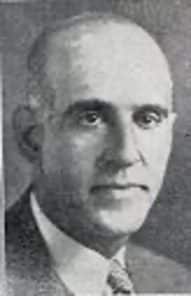
Henry Wallerstein opened a men’s clothing store in 1868 and was soon joined by his brothers Jacob and Melvin. In 1888, Wallerstein’s moved to a new three-story building, where it remained until it closed almost a century later. Jacob ran the store until he died in 1939. His son Herbert Wallerstein then took over the local institution. Herbert became an important civic leader, getting the Paducah floodwall built after the great flood of 1937 and helping to attract the Illinois Central Railroad repair shops to the city. In 1877, brothers Mike and Mohr Michael opened a saddle and harness business. After the advent of automobiles, they switched to hardware. Mike’s son Edwin later took over the business, running it for 57 years until he closed the store in 1982.
By 1894, there were at least 31 Jewish-owned businesses in Paducah. Of these, one-third were clothing or dry goods stores. Four owned manufacturing businesses, making cigars, mineral water, candy, saddles, and harnesses. Three owned grocery or confection stores.
Julius Weil left Prussia in 1866, settling in Paducah that same year. In 1868, he opened a confection manufacturing business, making various candies and cakes. Weil also owned a soda fountain which served non-alcoholic drinks of his concoction.
Jake Biederman, a native of Baden, Germany, started a grocery business in 1881. His brothers Henry and Joe later joined the operation. The Jake Biederman Grocery Company eventually included a dry goods store, an adjacent grocery store, as well as a feed and provision business. The Biederman brothers also manufactured confections and wholesaled candy and fruit. In 1894, the Biederman’s operation was one of the largest businesses in downtown Paducah.

One of the state’s most celebrated distillers got his start in Paducah. Isaac Bernheim came to the U.S. from Germany in 1868. After peddling for a time, he moved to Paducah to work in his uncle’s store. After a few months, he started working for Loeb & Bloom, a local Jewish-owned wholesale whiskey firm. In 1872, he and his brother Bernard started their own wholesale whiskey company. After the business grew significantly, they moved the operation to Louisville in 1888, where Bernheim became a major distiller and significant philanthropist.
By 1918, all three of the whiskey distilleries in Paducah were Jewish-owned. The arrival of prohibition in 1920 struck a lethal blow to these businesses. Two of them left the business permanently with their owners retiring. Only Friedman and Keiler returned to distilling after the prohibition’s repeal. The banning of alcohol led to the end of significant Jewish involvement in the liquor industry in Paducah. Afterward, most Jewish businesses were involved in retail clothing and dry goods.
Civic Engagement
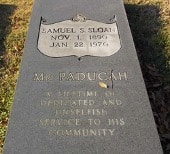
In 1966, the Paducah newspaper noted that while the Jewish population had always been small, “their service has been of the utmost character and valor” and Jews “have always been an integral part of the overall civic and industrial scene here.” Paducah Jews had long worked to improve the city. Govriel Rosenthal, who owned a successful wholesale dry goods firm, helped to create Paducah Junior College in 1932 and served as chairman of its board of trustees for seventeen years. When the school was struggling financially in its early years, Rosenthal used his fortune to help the school meet payroll. Later, local merchant Marshall Nemer spent 22 years on the college board, serving as chairman from 1968 to 1978. Samuel Carlick became a prominent local lawyer after World War II, serving as a city judge and as McCracken County Attorney. Sam Sloan, who had owned a retail grocery business in the early 20th century and later sold insurance, was a beloved figure in Paducah’s civic life. He belonged to numerous local fraternal and service organizations. In 1960, the city held a “Sam Sloan Day” in his honor. After he died in 1970, he had “Mr. Paducah” carved into his gravestone, reflecting his dedication to his hometown. Paducah native and author Irvin Cobb stated, as his close friends with several local Jews later wrote, “I was nearly grown and had to go north of the Ohio River before I knew there was such a nasty vicious thing as anti-Semitism.”
The Jewish Community Declines
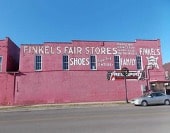
After World War II, Paducah Jews continued to concentrate on retail trade. Russian-born Sam Finkel had come to Paducah in 1919 and opened a dry goods store. Finkel’s Fair Store eventually expanded into a regional chain with eleven locations. Finkel ran the business until he died in 1967. His son-in-law Marshall Nemer then took it over. Nemer ran Finkel’s Fair Store until he retired and closed the business in 1989.
Jean Shapiro operated Jeanne’s clothing store for sixty years. Other Jewish-owned stores in Paducah in the 1950s included Weille’s, Wallerstein’s, Minnen’s, Michaelson’s, the Mannis Jewelry Store, and Lookofsky’s Children’s Store. By the 1970s and 80s, many of the stores in downtown Paducah were closing after a new suburban mall opened in the area. For Jewish merchants, with most of their children having moved away to larger cities, it seemed like a good time to retire and close their businesses. By the 21st century, local Jewish-owned stores, which once dominated downtown Paducah, were a thing of the past.
Corresponding with the decline in Jewish retailing in Paducah, the local Jewish community shrank significantly in the decades after World War II. While ~600 Jews lived in Paducah in 1937, there were only 275 in 1960. By 1984, this number had dropped to 175. Despite this decline, Temple Israel remained active and even enjoyed its first-ever stability in rabbinic leadership. In 1949, the congregation hired Rabbi Max Kaufman, who would lead Temple Israel for the next 25 years. In 1963, the congregation moved to its current location with a new synagogue that better fit its needs. The new temple had a larger social hall and more religious school classrooms, to handle the effects of the baby boom, though its sanctuary was smaller, reflecting the decline in overall membership. By 1974, Temple Israel had 70 families.
When Rabbi Kaufman retired in 1974, the congregation was struggling with membership. According to one congregation leader, only about fifteen people came to Friday night services during a typical week. He reported that “we need a change to bring us together and to create a Jewish community with an atmosphere conducive to the development of “responsible’ Jews.”
To re-energize the congregation, Temple Israel retained student rabbis who traveled from Hebrew Union College in Cincinnati to lead Shabbat and Holiday services as well as Torah study sessions. Temple Israel was able to rebound and even hired a few more full-time rabbis despite declining membership. After the last full-time rabbi left in 1992, Temple Israel has relied exclusively on student rabbis.
A New Beginning
The steady decline of the number of Jews in and around Paducah at the close of the 20th century made it challenging to sustain a tightly-knit Jewish community and maintain the synagogue – inside and outside. In 1998, the congregation was down to 40 families. Today it’s closer to 20 member units. The key to survival has been dedicated volunteer leadership over the past 25 years.
Several improvements and upgrades were made during the past ten years including new front doors for the synagogue, new carpeting and seat coverings for the sanctuary, kitchen remodeling, new lighting for the social hall, roof repairs, modernization of the plumbing, heating, ventilation, and air conditioning systems, Torah restoration, and significant changes to building security. The focus now is on leveraging finances to grow membership, ensure our legacy, and explore hiring another full-time rabbi.
An Integral Part of the Community
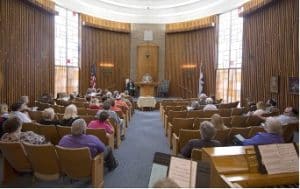
Temple Israel has always maintained close relationships with local churches and supports the Paducah Cooperative Ministry. Early in the 20th century, the congregation allowed the Broadway Methodist Church to hold services in the synagogue after their church had burned. In 1977, a local Episcopal Church donated a Star of David, which had been a part of their old slate roof, to Temple Israel to honor the close relationship between the two congregations. Even in difficult times, local churches supported Paducah’s lone Jewish congregation. When a group of teenagers painted anti-Semitic graffiti on the outside of the temple in 2004, 200 people from the larger community helped to clean up the building. In 2018, Temple Israel coordinated a community-wide unity service after the mass shooting at the Tree of Life Synagogue in Pittsburgh. Holocaust Memorial Services took place at Temple Israel in 2018 and 2019 with the participation of the local Abrahamic Interfaith Council.
Additional resources: Bernheim (1912) History of the Settlements of Jews in Paducah and the Lower Ohio Valley
